Car Review: Caterham Seven SuperSprint
Hats (and goggles) off to a remarkable company that allows us to enjoys the unbearable lightness of being this close to the ground
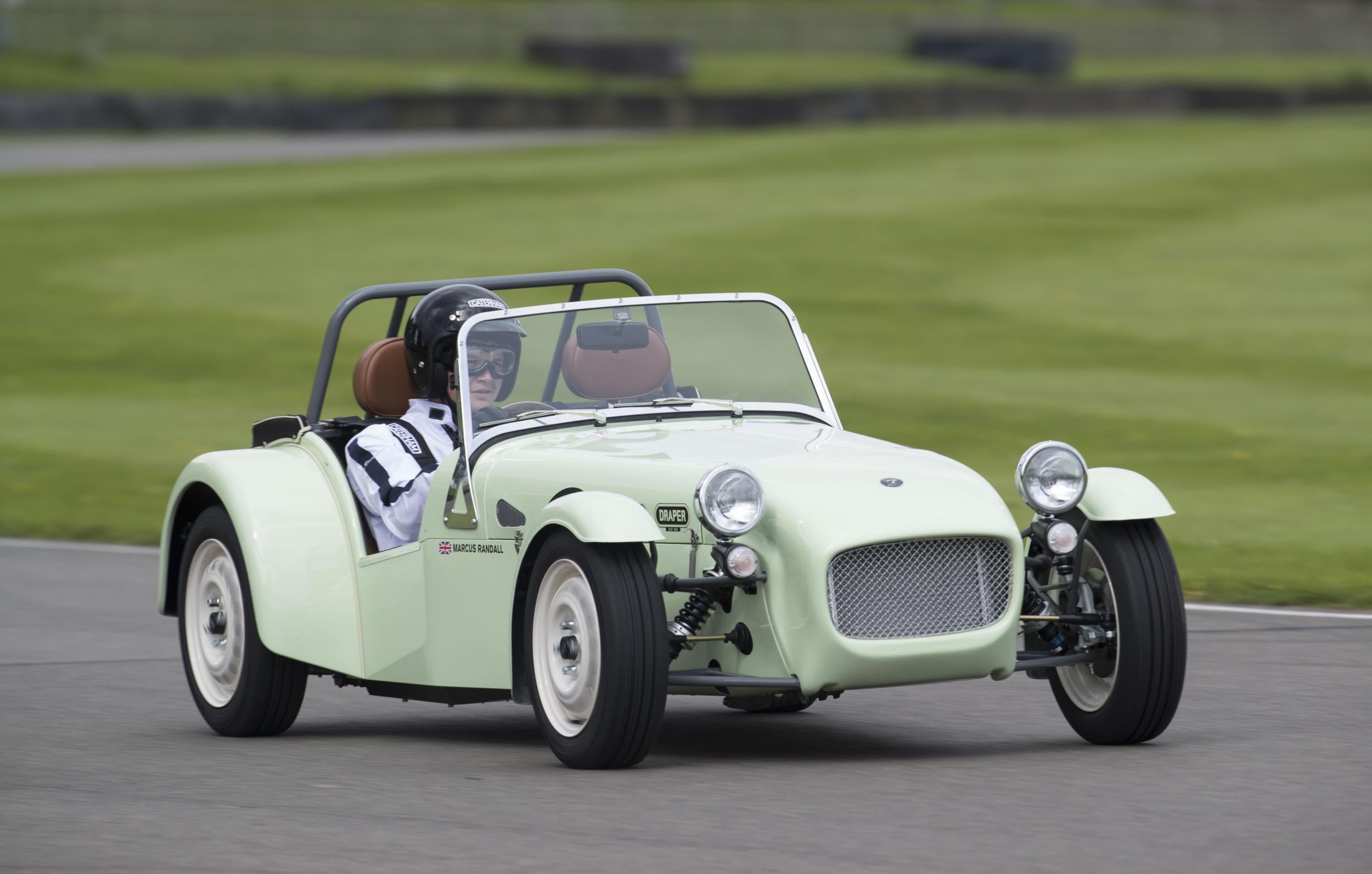
Driving a Caterham SuperSprint is like lying in a nice hot bath, but with your head in the freezer. If you can imagine that. Sitting low in the traditional supine position for a proper roadster, which the Caterham certainly is, your legs are stuck straight out. You’re lying low. So low you can easily touch the tarmac, so low that you could pick up those interesting bits of debris you sometimes see discarded by the side of the road, and so low you can drive under most car park barriers. Your buttocks practically skim the tarmac. You look up, and there’s the sky. But with the tonneau cover around the passenger compartment and acting as a sort of blanket, you feel quite tucked in, snug and warm, from the waist down, thanks to the Caterham’s highly effective heater.
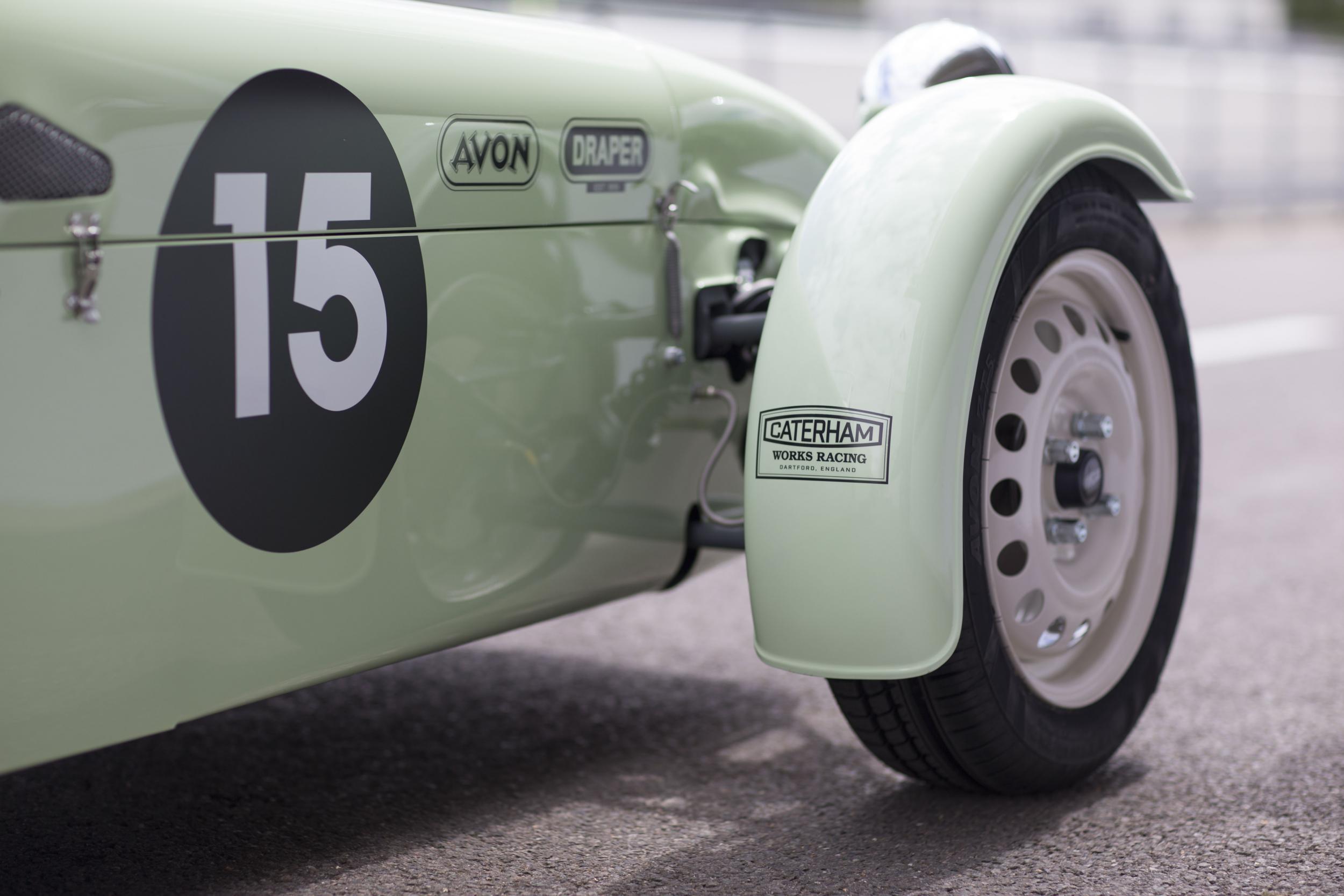
Upstairs, there’s a bit of a breeze. It was especially so in the cold snap we experienced recently, and taking the Caterham, a beast of a car, out to meet the “Beast from the East” was an exhilarating experience. One of The Big Things to understand about this particular version of the Caterham is that it has no roof. It isn’t a convertible. I repeat: it has no roof. Actually, there are no doors, either. Nor a boot. Nor a proper windscreen, just a pair of tiny fly screens (“Brooklands aeroscreens”) to stop the road grit and dust getting into your eyes. I would have loved to have worn goggles and a leather flying helmet, but I thought they might make me look just a bit too much like Roy “Chubby” Brown (a comedian). Caterham declares that its retromobile is: “For the discerning chap or chapess who prefers the unbridled thrill of the racetrack to the constraints of the public highway”.
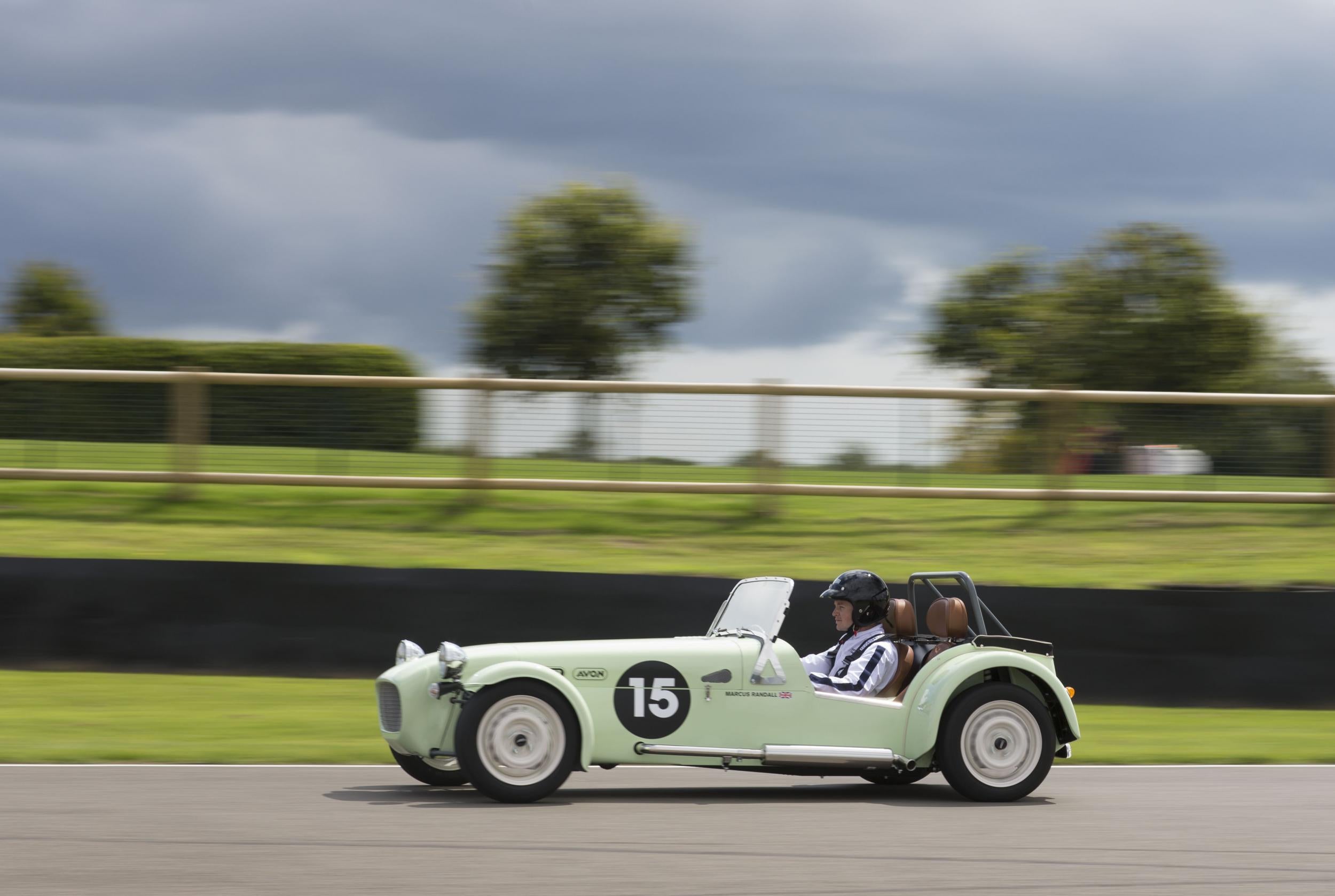
Quite so. Hence the racing roundels and faux sponsor livery. You can even order it as a single-seater, though that does feel a bit selfish.
So no, it isn’t as practical as, say, a Fiat 124 (probably the best real world roadster you can buy right now). Indeed, I would go so far as to say that it isn’t really quite at home in the 21st century at all, the SuperSprint. The performance obviously means that it can more than hold its own in modern traffic, but with even family hatches having inflated to such size these days, you definitely feel vulnerable. I kept the headlights on all day, just in case. When your eyeline is level with the wheels of a Ford Focus you do get a bit fearful of getting squashed.
The spec
Caterham Seven SuperSprint
Price: £29,995 (as tested; range starts at £19,995 built/£17,495 as a kit)
Engine capacity: 660cc petrol; 5-sp manual
Power output (bhp @ rpm): 95@7,000
Top speed (mph): 100mph
0-62 mph (seconds): 6.9
Fuel economy (mpg): n/a
CO2 emissions (g/km): n/a
You’ll have noticed the extreme retro look on this Caterham, which is pretty authentic. The SuperSprint model, most of which have sold out, is done up with lots of retro touches from the chrome trim and pastel shades to a delightfully slim wooden Motalita steering wheel and primitive toggle switches for the lights and tiny wipers, plus old-school steel wheels and thin tyres. There’s even a period look to the number plates. The reason why it looks like it’s come from 1957 is that it has indeed come more or less directly from 1957. You see, this car’s basic styling and concept dates back to the Lotus 7 model, which boasted a 1,500cc engine out of something called a Ford Consul. In those days the Lotus was mostly sold as a kit car, designed to take mechanical components with plenty of life in them from rusty old wrecks (the Consul being a prime candidate) to create a cheap racer or fun car for “around town”, as they said in those halcyon days. The Caterham will still perform those functions, though it’s not so cheap these days, having had almost everything except its looks thoroughly modernised, and the great majority are supplied fully-built before leaving the Dartford works. Like the Morgan, by the way, this is a car that thrives on a judicious mix of retro and modern, and only really found in Britain. Draw your own conclusions.
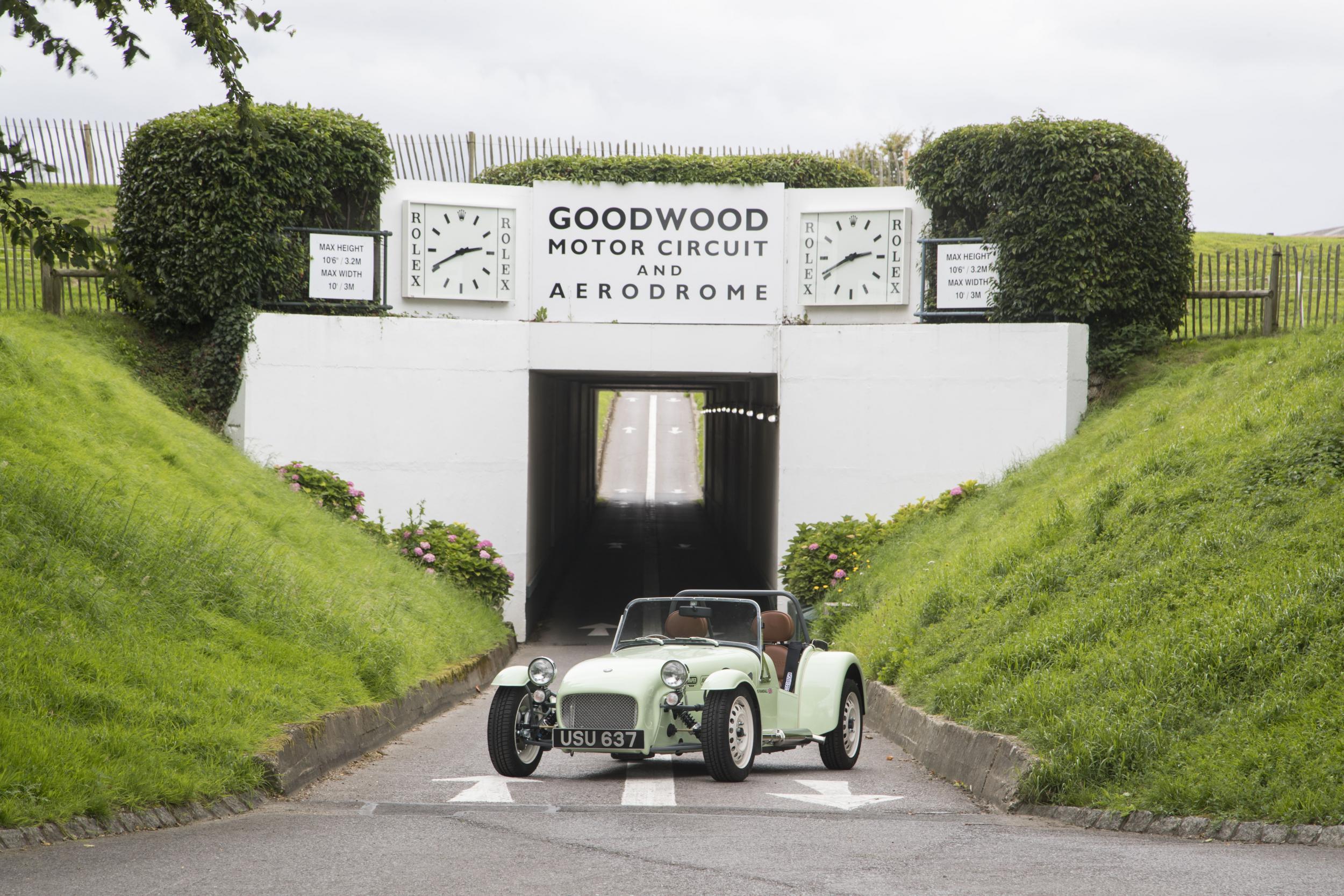
On the move, the Seven makes a fairly antique noise as it runs through its five gears, though that is misleading, and is purely a function of the lack of sound deadening. In the cabin you can detect the turbo whistle on the thoroughly up-to-date frenetic Suzuki engine, a 660cc unit designed to power tiny city cars in Japan. It develops a modest 95bhp – about the same as, say, a base VW Polo, but with only 490kg to lug around, the all-important power-to-weight ratio of this SuperSprint is comparable to a Porsche Cayman S, Ford Focus RS or Bentley Continental V8. The Caterham, thus, remains a living reminder of Lotus founder Colin Chapman’s guiding maxim for all his sports cars – “just add lightness”. It has impressive acceleration, the brakes are progressive, the short gear change precise, the steering is light and well-weighted, and thanks to the skinny tyres works at parking speeds without power assistance (obviously there are no airbags or sat navs around the place either).
Caterham doesn’t do “connectivity” to cyberspace, just connecting you, at times brutally, to the very real world around you, your senses of smell, sight and hearing brought alive by their exposure to diesel fumes, sunshine and the Caterham’s mechanical bits alike – with the accidental effect of making you much more safety conscious than in any conventional car, coddled in near silence as you are. There are, just in case you were wondering, no electronic stability aids on the Seven: just you responding to the signals your little racer is sending up to you, and a chassis set up that makes electronics superfluous. This Seven, unlike some of its hyper-powerful siblings, has just the right amount of performance for most amateur drivers to be feel at ease with.
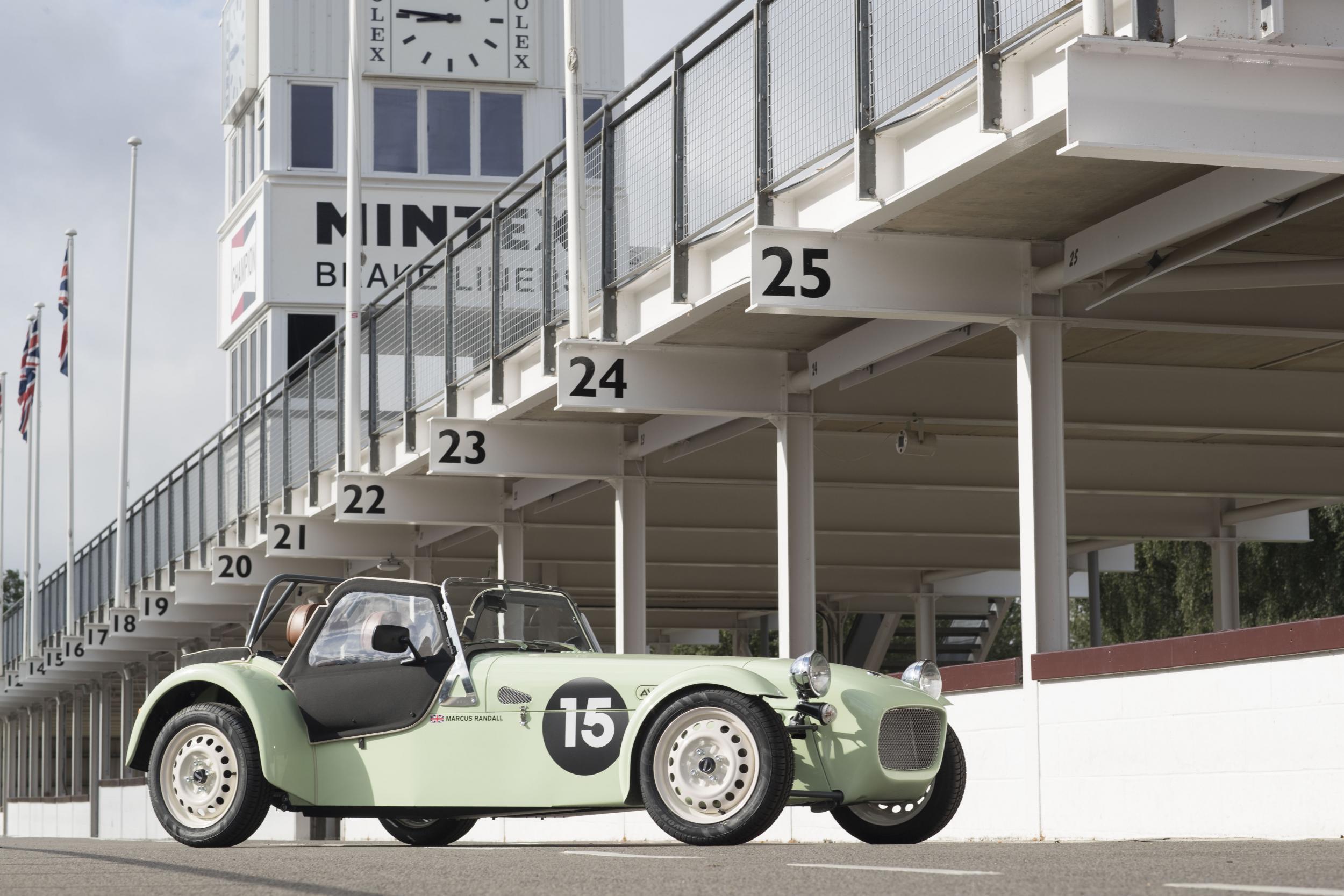
Caterham is a remarkable company that seems to be going better than ever thanks to that far sighted decision to buy the rights to the Seven back in 1973. It is poignant to contrast Caterham’s fortunes with those of today’s Lotus company, which makes some entertaining cars, but doesn’t seem to be developing anything new. Lotus was recently acquired by Chinese giant Geely when Geely bought Proton of Malaysia, Lotus’ previous owner. Lotus’ future may in time be focused on technology and engineering rather than manufacturing. It is difficult to believe that (aside from the Morgan, which has also done some gorgeous retro editions) the oldest car shape on the road might outlive all its Lotus descendants, but there we are. Coincidentally, Caterham Cars is now owned by a Malaysian businessman, Tony Fernandes (who also owns Team Lotus, now also separate from Lotus Cars). Small world.
Even on today’s ugly, violent, congested, callous streets, the Caterham Seven attracts more attention and affection than anything else on the road, but I can’t imagine parking it and leaving it outside overnight. It might rain. It might get trodden on. It’s so cute and light that someone might slip it under their arm and steal it away. Someone like me, in fact.
Join our commenting forum
Join thought-provoking conversations, follow other Independent readers and see their replies
Comments